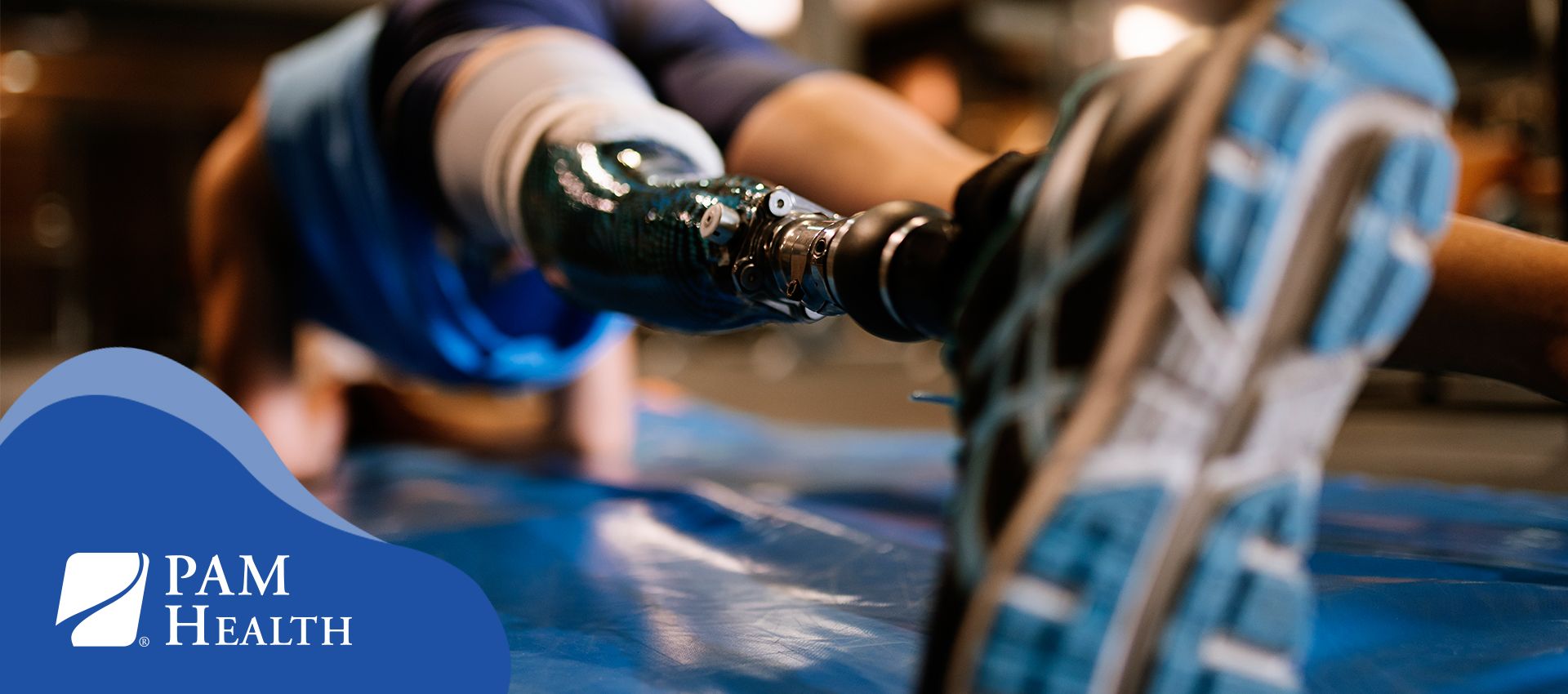
Limb Loss and Limb Difference Awareness Month Celebrates Courage and Strength of Amputees
Every day, 507 Americans lose a limb.
Whether it is the result of a trauma, an ongoing battle with vascular disease, or cancer – when a limb is surgically removed, the experience is a life-changing one. Patients undergoing an amputation need a dedicated, experienced team able to support all their needs.
For Limb Loss and Limb Difference Awareness Month, PAM Health is sharing how “We Care” for amputation patients through the post-surgery process and beyond.
Find a PAM Health Location Near You
At PAM Health hospitals, specialized physicians and nurses begin treatment immediately following surgery. Teams focus on wound healing, pain management and emotional support. Many amputees suffer from phantom pain and all amputees struggle with overcoming difficult emotions, such as grief, depression and anxiety.
Click here for tips on coping with these emotions.
Physically, the patient must re-learn how to perform daily activities. Even before receiving a prosthetic leg or bionic arm, rehabilitation is needed to build strength and endurance. With weight-bearing exercises, mobility and gait training, the patient is able to regain their highest level of independence.
If appropriate for the patient’s wants and needs, the treatment team will then begin the prosthetics fitting process. PAM Health therapists help the patient to gain function of the new limb. In ongoing rehabilitation sessions, the patient works with PAM Health staff to meet their individual needs and goals, mastering the use of the device.
The patient-centered approach at PAM Health is what Benjamin Luken appreciated most as he recovered from his second below-the-knee amputation. Staff members helped him return home after surpassing his initial goals. To learn more about Benjamin’s experience at PAM Health, click here.
Explore PAM Health's Inpatient & Outpatient Rehabilitation Services in Clarksville, IN
Beyond post-surgery care and rehabilitation, PAM Health is dedicated to supporting amputees emotionally as well. All treatment teams work with patients and their families to connect them to limb loss community resources and support groups. If continued support is required, it is provided. When the patient is ready to return to hobbies they enjoy, the PAM Health team is sure to provide access to adaptive sports and recreation organizations.
Amputation rehabilitation programs can be found at PAM Health hospitals across the country.